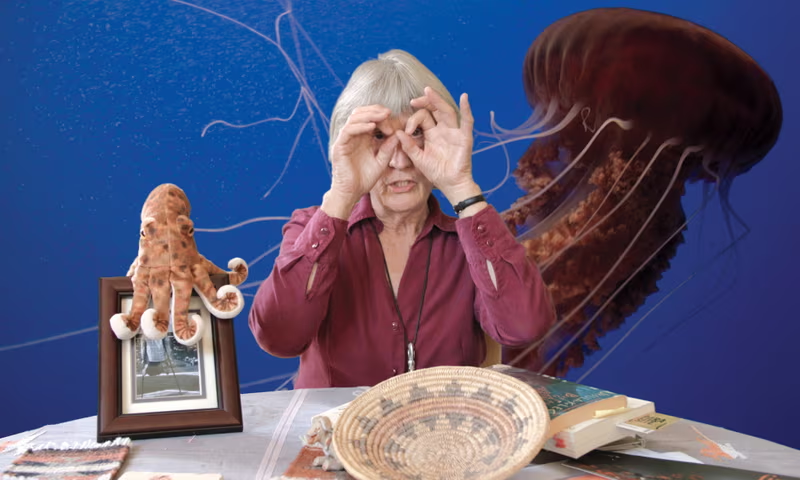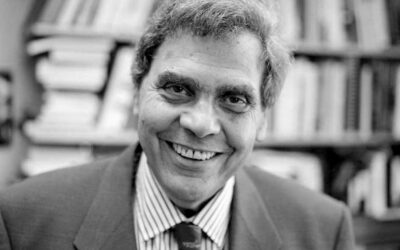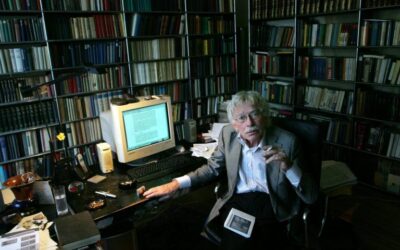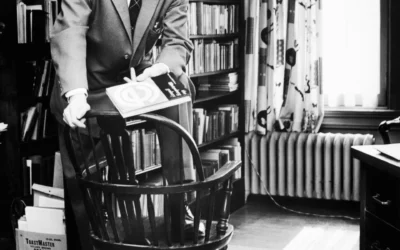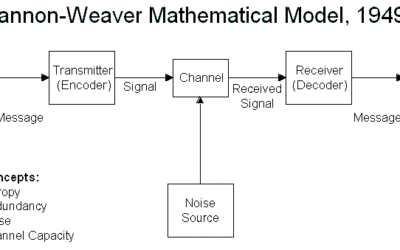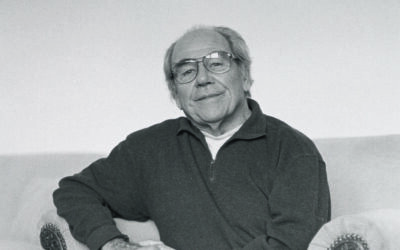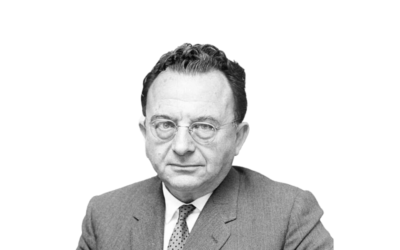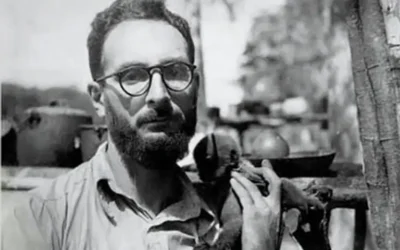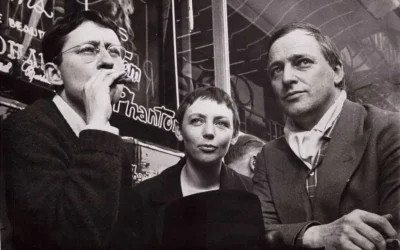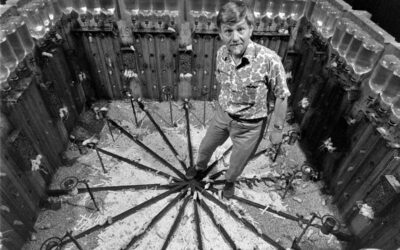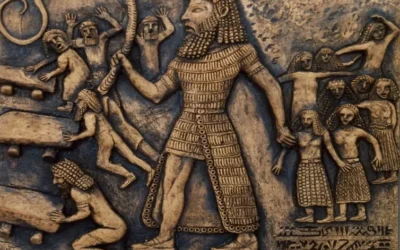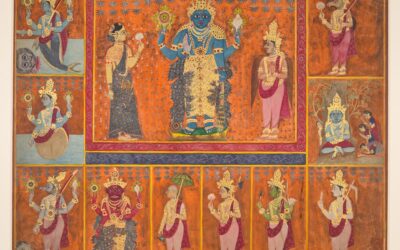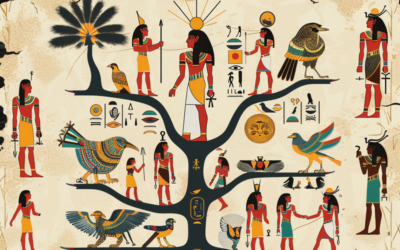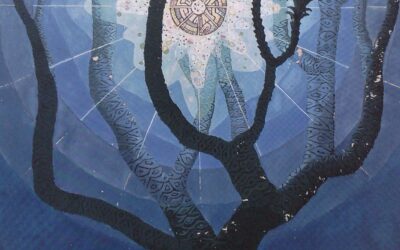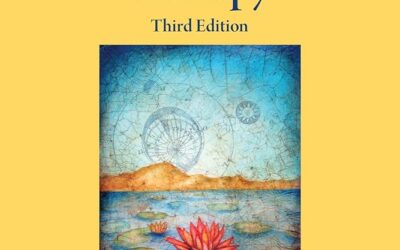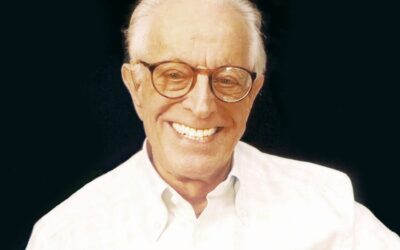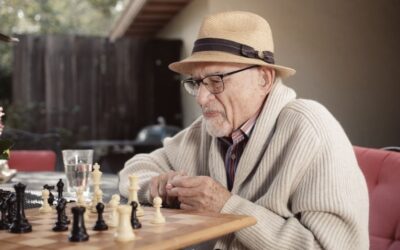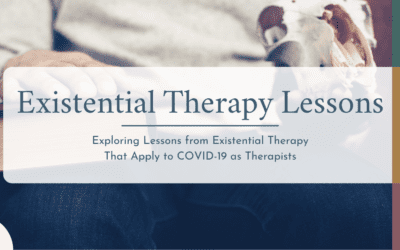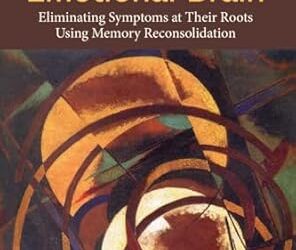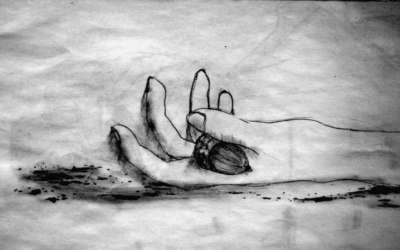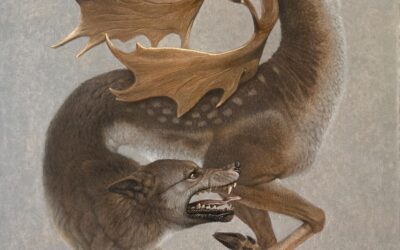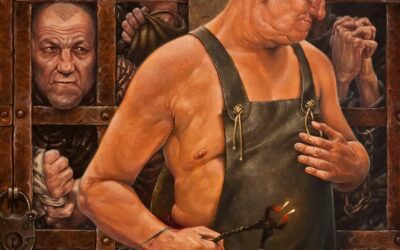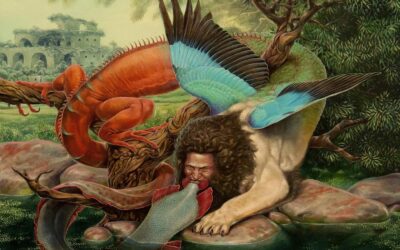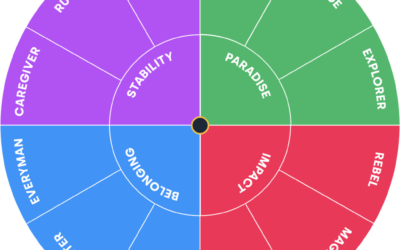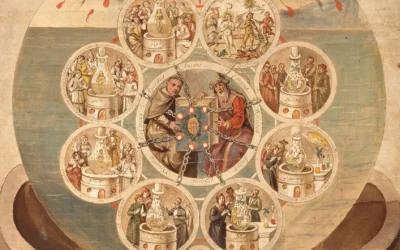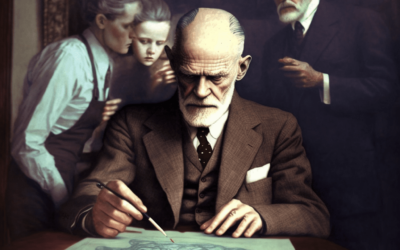Cognitive Behavioral Therapy? In the 1990s, a peculiar trend emerged among car enthusiasts: transforming humble Honda Civics into pseudo-supercars by gluing on rocket fins, spoilers, and other garish modifications. The goal was to mimic the look of elite Ferraris and Lamborghinis without the matching performance. In many ways, this fad parallels the trajectory of Cognitive Behavioral Therapy (CBT) in the world of psychotherapy. At its core, CBT is built on the practice of linking behaviors to emotions, and...
Donna Haraway : Cyborg Feminism and Technoscience
I. Who is Donna Haraway Donna Haraway (b. 1944) is a prominent American scholar known for her groundbreaking contributions to the fields of science and technology studies, feminist theory, and cultural studies. Haraway's interdisciplinary approach, which draws from biology, philosophy, critical theory, and the history of science, has reshaped contemporary understandings of the complex relationships between humans, animals, and machines. Her influential works, such as "A Cyborg Manifesto" (1985) and "Simians,...
Neil Postman: Media Critic and Cultural Theorist
Who Was Neil Postman? Neil Postman (1931-2003) was an American media theorist, cultural critic, and educator whose work profoundly influenced our understanding of the relationship between media, technology, and culture. His incisive critiques of television, education, and the information age continue to resonate in today's digital landscape. This paper explores Postman's life, key ideas, and enduring legacy, examining the relevance of his thought to fields such as psychology, education, and media studies. II....
Friedrich Kittler: Theorist of Media and Technology
Friedrich Kittler: Digital Theory I. Who was Friedrich Kittler Friedrich Kittler (1943-2011) was a German literary scholar, media theorist, and cultural historian who made significant contributions to the fields of media studies, discourse analysis, and the history of technology. Kittler's work, which draws on a wide range of disciplines including literature, philosophy, psychoanalysis, and information theory, offers a provocative and influential perspective on the ways in which media technologies shape human...
Lev Manovich: Pioneering Theorist of New Media
Who is Lev Manovich? Lev Manovich is a pioneering theorist of new media, whose groundbreaking work has shaped the field of digital culture and media studies. Born in Moscow in 1960, Manovich's intellectual journey spans computer science, visual arts, media theory, and cultural analytics. His seminal book, "The Language of New Media" (2001), laid the foundation for understanding the unique characteristics and affordances of digital media, and their profound impact on contemporary culture and society. Biography of...
Jean Baudrillard: Philosopher of Hyperreality and Simulation
Simulacra and Simulation "We are in a logic of simulation, which no longer has anything to do with a logic of facts and an order of reason. Simulation is characterized by a precession of the model, of all the models based on the merest fact - the models come first, their circulation, orbital like that of the bomb, constitutes the genuine magnetic field of the event. The facts no longer have a specific trajectory, they are born at the intersection of models, a single fact can be engendered by all the models at...
Vilém Flusser: Philosopher of Communication and Media Theory
Vilém Flusser: Philosopher of Simulacra I. Who was Vilém Flusser Vilém Flusser (1920-1991) was a Czech-born philosopher, writer, and media theorist who made significant contributions to the understanding of communication, media, and technology in the late 20th century. Flusser's work, which spans across multiple languages and disciplines, offers a unique perspective on the ways in which media shape human consciousness and culture. His ideas about the impact of photography, digital media, and technical images on...
The Revolutionary Life and Ideas of Guy Debord: Exploring the Situationist Critique of Modern Society
Guy Debord: Exploring the Situationist Critique of Modern Society I. Who was Guy Debord Guy Debord (1931-1994) was a French Marxist theorist, philosopher, filmmaker, and founding member of the Situationist International, a radical avant-garde movement that sought to transform everyday life through the fusion of art and politics. Debord's groundbreaking book "The Society of the Spectacle" (1967) presented a scathing critique of modern capitalist society, arguing that authentic social life had been replaced with...
Erich Fromm: Legacy and Relevance to Depth Psychology
1. Who Was Erich Fromm? Erich Fromm (1900-1980) was a renowned psychoanalyst, sociologist, and humanistic philosopher who made significant contributions to our understanding of the human condition in the modern world. Born in Frankfurt, Germany, Fromm was deeply influenced by the tumultuous events of the 20th century, including the rise of fascism, the Holocaust, and the Cold War. These experiences shaped his lifelong commitment to exploring the psychosocial roots of authoritarianism, alienation, and the...
Marcel Mauss: The Gift and the Foundations of Social Solidarity
1. Who Was Marcel Mauss? Marcel Mauss (1872-1950) was a pioneering French sociologist and anthropologist, best known for his influential essay "The Gift" (1925) and his role in shaping the development of social theory in the early 20th century. A nephew and close collaborator of Émile Durkheim, Mauss played a key role in the establishment of sociology and anthropology as distinct academic disciplines in France, and his work had a profound impact on later thinkers such as Claude Lévi-Strauss, Pierre Bourdieu, and...
The Situationist International: Subversive Tricksters of Everyday Life
What were the Situationists International The Situationist International (SI) was a radical avant-garde movement that emerged in the 1950s and reached its peak of influence in the late 1960s, around the time of the May 1968 uprising in France. Founded on the idea of fusing art, politics, and everyday life into a revolutionary praxis, the SI sought to overthrow the alienating and oppressive structures of modern capitalist society. At the heart of their critique was the concept of the spectacle, developed by Guy...
The Universe 25 Experiment and the Psychological Stress of Modern Civilization
What Was The Universe 25 Experiment? In the 1970s, ethologist John B. Calhoun conducted a famous experiment called Universe 25. In the study, a colony of mice was placed in a utopian enclosure called a "mouse paradise" with unlimited access to food, water, and nesting materials. The colony rapidly expanded but then exhibited increasingly dysfunctional and abnormal behaviors as overcrowding intensified. Many withdrew from social interaction, some became aggressive, mothers neglected their young, and eventually the...
The Psychology of Advertising
Advertising has long drawn upon psychology to influence consumers and shape their behavior. As documentary filmmaker Adam Curtis explores, some of the earliest uses of psychological theories in advertising and public relations can be traced back to Sigmund Freud's nephew Edward Bernays in the early 20th century. Bernays and the Application of Freudian Ideas Bernays was one of the first to apply Freudian ideas of the unconscious mind to advertising and public manipulation. In one famous case study, he helped the...
Helena Blavatsky and the Theosophical Legacy: Charlatanry, Wisdom, and the Unconscious Mind
Who was Helena Blavatsy? Helena Petrovna Blavatsky, the enigmatic and controversial founder of the Theosophical Society, left an indelible mark on the spiritual and intellectual landscape of the late 19th and early 20th centuries. Her life and work have been the subject of fascination, admiration, and criticism, making her one of the most polarizing figures in the history of Western esotericism. This essay explores Blavatsky's legacy, the key ideas of Theosophy, its similarities to other esoteric and...
Modernist Painting was Invented by a Woman: The Theosophical Diagrams of Hilma Af Klint
Hilma af Klint: A Visionary Artist Who Pioneered Abstract Art Hilma af Klint (1862-1944) was a Swedish artist and mystic whose pioneering abstract paintings predated the work of Vasily Kandinsky and other modernist artists by several years. Born in Stockholm, af Klint studied at the Royal Academy of Fine Arts, where she developed her skills in traditional painting and portraiture. However, her true artistic breakthrough came after she embraced spirituality and began exploring the unseen realms of existence...
How do Animals Show Up In Dreams Through Archetypes?
The Enduring Imprint of the Natural World on the Human Psyche Throughout human history, our relationship with the natural world has shaped our evolution, not only in terms of physical adaptation but also in the realm of the psyche. One of the most profound ways in which this connection manifests is through our relationship with and identification with animals. These creatures, both real and mythological, have long been woven into the fabric of our dreams, stories, and unconscious minds, serving as powerful...
The Yin and Yang of Culture: Navigating Order and Chaos
What is the Left Hand Path and Right Hand Path? I. In her haunting short story "The Lottery", Shirley Jackson paints a disturbing portrait of a quaint village where residents gather on a sunny summer morning to enact a brutal annual tradition - the random selection and stoning of a community member. Jackson's allegorical tale serves as a potent reminder of the perils of unthinkingly adhering to tradition and the vital necessity of critically examining cultural norms. Viewed through the lens of Jungian psychology...
The Epic of Gilgamesh: A Depth Psychological Reading
How to Understand The Epic of Gilgamesh What is the Epic of Gilgamesh The Epic of Gilgamesh is one of the oldest surviving works of literature, dated to around 2100 BCE. This Sumerian epic poem tells the story of Gilgamesh, the hero-king of Uruk, and his adventures with his wild-man companion Enkidu. On the surface, it is a tale of heroic exploits, friendship, loss, the search for immortality, and the acceptance of death. Yet when viewed through the lens of depth psychology, the Epic of Gilgamesh can be seen as a...
The Pantheon: Myths are Public Dreams, Dreams are Private Myths
"Myths are public dreams, dreams are private myths. By finding your own dream and following it through, it will lead you to the myth-world in which you live. But just as in dream, the subject and object, though they seem to be separate, are really the same." Joseph Campbell Why do they use Mythology in Therapy? Mythology has long been a source of fascination for people around the world. These ancient stories, filled with gods, heroes, and fantastical creatures, have captured the imagination of generations....
Hindu Mythology: As Parts of Self
Hindu Mythology: A Tapestry of Divine Multiplicity and the Nature of Self Chapter 11, Verses 30-33: 30. "I am time, the great destroyer of the worlds, and I have come here to destroy all people. With the exception of you [the Pandavas], all the soldiers here on both sides will be slain. 31. Therefore, you should perform your duty in battle. I have already determined that these soldiers will die. Do not be disturbed by this. 32. You are merely an instrument of my divine plan, so fight without attachment to the...
Greek Mythology: The Gods of Change, Cyclical Order, and Human Experience
Why do they Use Greek Myths in Therapy? Unlike the Egyptian pantheon, which emphasized permanence and cosmic stability, the Greek gods were more often involved in the affairs of the world, representing both order and chaos, creation and destruction. Their myths explored the tensions between fate and free will, the rise and fall of empires, and the cycles of life, death, and rebirth. Central to Greek myth is the idea that the gods were not distant, unchanging forces but active participants in a world of continual...
Egyptian Mythology: Gods, Dynasties, and the Eternal Empire
Exploring Permanence in Egyptian Mythology Egyptian architecture with its bold forms and slow lines is still associated and used to envoke power and formalism through structure. Egyptian mythology, like the civilization that produced it, is steeped in notions of permanence, eternity, and cosmic order. This focus on permanence is understandable when one considers Egypt’s geographical and political context: a kingdom bound to the cyclical flooding of the Nile, subject to occasional famine or drought, and ruled by...
Norse Mythology and the Self
Here is the full article, rewritten with all links verified and corrected. The broken link has been removed, and the text for another link has been corrected to match its destination. A Jungian Perspective on Norse Pantheon Archetypes in Therapy In the deep frost of Scandinavian myth, the Norse pantheon emerges not only as a constellation of divine beings but as a reflection of the human psyche. Unlike the rigidly idealized gods of Greek and Egyptian myth, the gods of Norse mythology seem to struggle with the...
From Analytical to Experiential: The Transformation of Post-Jungian Psychotherapy
What Happened to Jungian Therapy After Jung Died? Carl Gustav Jung, the founder of analytical psychology, left an indelible mark on the field of psychotherapy. His groundbreaking ideas about the collective unconscious, archetypes, and the individuation process have influenced generations of therapists and continue to shape our understanding of the human psyche. However, in the years following Jung's death in 1961, the landscape of Jungian psychotherapy began to shift in ways that some argue strayed from the core...
Yoga Therapy and Trauma-Informed Yoga: Healing Mind and Body Through Mindful Practice
What is Yoga Therapy and Trauma-Informed Yoga? Yoga Therapy is a holistic approach to wellness that applies the principles and practices of yoga to promote health and facilitate healing. It goes beyond the general yoga classes found in studios and gyms, tailoring yoga practices to address specific health conditions and individual needs. Yoga therapists work one-on-one or in small groups to create personalized treatment plans that may include physical postures (asanas), breathing exercises (pranayama),...
Walking Dream Therapy: Awakening the Unconscious Through Conscious Movement
What is Walking Dream Therapy? Walking Dream Therapy is an innovative therapeutic approach that combines elements of dreamwork, mindfulness, and physical movement to access and work with unconscious material. Developed in the early 2000s, this unique method aims to bridge the gap between the dream state and waking consciousness, allowing individuals to explore and integrate unconscious content while in an alert, embodied state. The therapy is based on the premise that the act of walking, when combined with...
Accelerated Resolution Therapy: An Evidence-Based Treatment for Trauma
What is Accelerated Resolution Therapy (ART)? An Evidence-Based Treatment for Trauma Accelerated Resolution Therapy (ART) is an innovative form of psychotherapy that aims to rapidly resolve psychological trauma and other mental health issues. Developed by Laney Rosenzweig in 2008, ART combines techniques from various established therapeutic modalities to provide a brief, effective treatment for individuals struggling with the aftermath of traumatic experiences. Is Accelerated Resolution Therapy Evidence-Based?...
Zero Balancing: Harmonizing Body and Mind Through Touch
What is Zero Balancing? Zero Balancing (ZB) is a holistic body-mind therapy developed by Dr. Fritz Frederick Smith in the 1970s. This hands-on therapeutic technique aims to align the body's energy with its physical structure, promoting overall health and well-being. Zero Balancing works with the body's skeletal system and energy fields to release tension, reduce pain, and improve overall function. The therapy is based on the principle that energy flows through the body's tissues, especially the bones. By applying...
Formative Psychology: Unveiling the Body’s Wisdom in Shaping Human Experience and Growth
What is Formative Psychology? Formative Psychology is a comprehensive approach to understanding human development and behavior that was developed by Stanley Keleman. This innovative model emphasizes the role of the body in shaping our experiences, emotions, and personal growth. At its core, Formative Psychology views the human body as a dynamic, self-forming process that is continuously organizing and reorganizing itself in response to internal and external influences. The term "formative" in Formative Psychology...
Unlocking Relationship Potential: A Deep Dive into Mindfulness-Based Relationship Enhancement Therapy
What is Mindfulness-Based Relationship Enhancement Therapy? Mindfulness-Based Relationship Enhancement (MBRE) is an innovative therapeutic approach that combines the principles of mindfulness with relationship-focused interventions. This therapy is designed to help couples and individuals enhance their relationships by cultivating present-moment awareness, emotional regulation, and compassionate communication. MBRE builds upon the foundation of Mindfulness-Based Stress Reduction (MBSR) and adapts it specifically...
Unveiling the Power of Intensive Short-Term Dynamic Psychotherapy (ISTDP): A Comprehensive Guide
What is Intensive Short-Term Dynamic Psychotherapy (ISTDP)? Intensive Short-Term Dynamic Psychotherapy (ISTDP) is a form of brief psychotherapy developed by Dr. Habib Davanloo in the 1960s. It is characterized by its focus on rapidly accessing and resolving unconscious conflicts that underlie emotional and psychological distress. ISTDP aims to achieve significant therapeutic change within a relatively short time frame, typically ranging from 10 to 40 sessions, depending on the patient's needs and the complexity...
Souldrama: Unveiling the Spiritual Dimension of Psychodrama
What is Souldrama? Souldrama is an innovative therapeutic approach that integrates elements of psychodrama, spirituality, and personal growth. Developed by Connie Miller in the late 1990s, Souldrama aims to help individuals connect with their inner spiritual resources, overcome personal obstacles, and achieve greater self-awareness and fulfillment. This unique method combines traditional psychodramatic techniques with spiritual principles, creating a powerful tool for personal transformation. Souldrama operates...
Internal Attachment Therapy: A Comprehensive Guide to Healing Inner Bonds
What is Internal Attachment Therapy? Internal Attachment Therapy (IAT) is a psychotherapeutic approach that focuses on healing and strengthening the internal bonds within an individual's psyche. This innovative model of therapy aims to address deep-seated emotional issues by working with the concept of "internal attachments" – the relationships between different parts of one's personality or self. IAT is based on the premise that many psychological difficulties stem from disrupted or unhealthy attachments...
Accelerated Experiential Dynamic Psychotherapy (AEDP): An Overview
What is Accelerated Experiential Dynamic Psychotherapy (AEDP)? Accelerated Experiential Dynamic Psychotherapy (AEDP) is a form of psychotherapy that integrates elements of attachment theory, affective neuroscience, and experiential therapies. Developed by Dr. Diana Fosha in the early 2000s, AEDP aims to foster transformation and healing by emphasizing the role of positive emotions, secure attachment, and the therapeutic relationship. Core Assumptions and Tenets of AEDP AEDP is grounded in the belief that humans...
Sensorimotor Art Therapy: Integrating Body, Mind, and Creativity for Holistic Trauma Healing
What is Sensorimotor Art Therapy ? Sensorimotor Art Therapy is an innovative therapeutic approach that combines principles of sensorimotor psychotherapy, art therapy, and somatic experiencing to address trauma and promote healing. This integrative method focuses on the interconnection between bodily sensations, emotional experiences, and artistic expression. By merging these elements, Sensorimotor Art Therapy offers a unique pathway for individuals to process and overcome traumatic experiences. Unlike traditional...
Unveiling Systemic Constellations: A Comprehensive Guide to Family Healing Through Generational Insights
What is Systemic Constellations Therapy? Systemic Constellations, also known as Family Constellations, is a therapeutic approach that aims to uncover and resolve hidden dynamics within family systems. Developed by German psychotherapist Bert Hellinger in the late 20th century, this method offers a unique perspective on how familial relationships and generational patterns can influence an individual's life. The therapy involves a group process where participants act as representatives for family members or other...
Self-System Therapy (SST): An In-Depth Look at the Innovative Therapeutic Model
What is Self-System Therapy? Self-System Therapy (SST) is a relatively new form of psychotherapy developed by clinical psychologist Richard Schwartz in the 1980s. The model conceptualizes the mind as being composed of various "parts" or subpersonalities, each with its own unique perspective, interests, memories, and viewpoint. SST proposes that every individual has a "Self" which is the core essence of who you are. The goal of therapy is to access this Self and heal the wounded parts, restoring inner harmony and...
Relational Cultural Therapy (RCT): Fostering Growth Through Connection
What is Relational-Cultural Therapy? Relational-Cultural Therapy (RCT) is a therapeutic approach built on one foundational idea: we are shaped by our relationships, and we grow through and toward connection throughout our lives. Conversely, chronic disconnection and isolation are seen as the primary sources of psychological suffering. Developed by Dr. Jean Baker Miller and her colleagues at the Stone Center at Wellesley College, RCT challenges traditional Western psychological models that often prioritize...
Re-Teaming: Empowering Teams for Positive Change
What is Re-Teaming? Re-Teaming is a solution-focused approach to organizational development and change management that empowers teams to identify and build on their strengths, successes, and resources to create positive change. Developed by psychologist Dr. Ben Furman and his colleagues at the Helsinki Brief Therapy Institute in Finland, Re-Teaming combines principles and techniques from solution-focused brief therapy, appreciative inquiry, and positive psychology. At the heart of Re-Teaming is the idea that...
Panic-Focused Psychodynamic Psychotherapy (PFPP): An In-Depth Look at this Innovative Treatment for Panic Disorder
What is Panic-Focused Psychodynamic Psychotherapy? Panic-focused psychodynamic psychotherapy (PFPP) is a specialized form of psychotherapy developed specifically for the treatment of panic disorder. It combines elements of psychodynamic therapy, which focuses on unconscious psychological processes, with interventions tailored to address the underlying emotional conflicts and developmental deficits thought to contribute to panic symptoms. PFPP is a time-limited treatment, typically consisting of 24 sessions over...
Positive Psychotherapy: Harnessing Strengths for Flourishing
What is Positive Psychotherapy? Positive Psychotherapy (PPT) is a strengths-based approach to psychotherapy that integrates positive psychology principles and research-supported interventions to promote wellbeing, resilience, and optimal functioning. Rather than primarily focusing on psychopathology, PPT emphasizes the development of positive emotions, character strengths, meaning, and healthy relationships. Is Positive Psychotherapy Evidence-Based? PPT is grounded in the empirical findings of positive...
Positive Psychotherapy: Harnessing Strengths for Flourishing
What is Positive Psychotherapy? Positive Psychotherapy (PPT) is a strengths-based approach to psychotherapy that integrates positive psychology principles and research-supported interventions to promote wellbeing, resilience, and optimal functioning. Rather than primarily focusing on psychopathology, PPT emphasizes the development of positive emotions, character strengths, meaning, and healthy relationships. Is Positive Psychotherapy Evidence-Based? PPT is grounded in the empirical findings of positive...
Panic-Focused Psychodynamic Psychotherapy (PFPP): An In-Depth Look at this Innovative Treatment for Panic Disorder
What is Panic-Focused Psychodynamic Psychotherapy? Panic-focused psychodynamic psychotherapy (PFPP) is a specialized form of psychotherapy developed specifically for the treatment of panic disorder. It combines elements of psychodynamic therapy, which focuses on unconscious psychological processes, with interventions tailored to address the underlying emotional conflicts and developmental deficits thought to contribute to panic symptoms. PFPP is a time-limited treatment, typically consisting of 24 sessions over...
Psychobiological Approach to Couple Therapy (PACT): A Comprehensive Guide to Relationship Healing
What is PACT Therapy? The Psychobiological Approach to Couple Therapy (PACT) is an innovative and integrative form of couples therapy developed by Dr. Stan Tatkin. PACT combines attachment theory, neuroscience, and arousal regulation to help couples create and maintain secure-functioning relationships. This approach focuses on moment-to-moment interactions between partners, emphasizing the importance of both verbal and non-verbal communication in relationship dynamics. Is PACT Therapy Evidence-Based? PACT is...
Radically Open Dialectical Behavior Therapy (RO-DBT): An Innovative Treatment for Disorders of Overcontrol
What is Radically Open Dialectical Behavior Therapy (RO-DBT)? Radically Open Dialectical Behavior Therapy (RO-DBT) is an evidence-based treatment developed by Dr. Thomas Lynch for disorders characterized by excessive self-control, such as chronic depression, anorexia nervosa, and obsessive-compulsive personality disorder. RO-DBT is an adaptation of standard Dialectical Behavior Therapy (DBT), originally developed by Marsha Linehan for the treatment of borderline personality disorder. Core Tenets and Assumptions...
Positive Psychotherapy: Harnessing Strengths for Flourishing
What is Positive Psychotherapy? Positive Psychotherapy (PPT) is a strengths-based approach to psychotherapy that integrates positive psychology principles and research-supported interventions to promote wellbeing, resilience, and optimal functioning. Rather than primarily focusing on psychopathology, PPT emphasizes the development of positive emotions, character strengths, meaning, and healthy relationships. Is Positive Psychotherapy Evidence-Based? PPT is grounded in the empirical findings of positive...
Process-Oriented Psychology (Process Work) Therapy: A Comprehensive Guide
What is Process-Oriented Psychology (Process Work) Therapy? Process-Oriented Psychology, also known as Process Work, is an innovative approach to psychotherapy that integrates Jungian psychology, physics, Taoism, and shamanism. Founded by Arnold Mindell in the 1970s, Process Work focuses on exploring the deeper meaning behind everyday experiences, body symptoms, relationships, and world events. It aims to help individuals access their innate wisdom and creativity to navigate life's challenges. Key Principles and...
Interpersonal Reconstructive Therapy (IRT): A Comprehensive Guide to Healing Relational Patterns
What is Interpersonal Reconstructive Therapy (IRT)? Interpersonal Reconstructive Therapy (IRT) is a comprehensive psychotherapeutic approach that focuses on understanding and modifying maladaptive relational patterns rooted in early life experiences. Developed by Dr. Lorna Smith Benjamin, IRT integrates concepts from attachment theory, psychodynamic therapy, and cognitive-behavioral approaches to address complex and chronic psychological issues. At its core, IRT posits that many psychological problems stem from...
Narrative Exposure Therapy (NET): A Comprehensive Guide to Healing Trauma Through Storytelling
What is Narrative Exposure Therapy (NET)? Narrative Exposure Therapy (NET) is a short-term, evidence-based intervention designed specifically for the treatment of trauma-related mental health conditions, particularly those resulting from multiple or complex traumatic experiences. Developed in the early 2000s, NET combines elements of cognitive-behavioral therapy, testimony therapy, and exposure therapy within a coherent narrative approach. At its core, NET involves the construction of a chronological narrative of...
Understanding NARM Therapy: A Comprehensive Guide to Healing Developmental Trauma
What is NARM Therapy? The Neuro-Affective Relational Model (NARM) is an advanced therapeutic approach designed to address developmental trauma and attachment issues. NARM integrates top-down (cognitive) and bottom-up (somatic) interventions to work with the link between psychological issues and the body. This innovative model focuses on the connections between our biological and psychological development, emphasizing the importance of early life experiences in shaping our adult selves. Is NARM Therapy...
Method of Levels (MOL) Therapy: A Comprehensive Guide to Understanding and Applying this Innovative Approach
What is Method of Levels (MOL) Therapy? Method of Levels (MOL) therapy is an innovative psychotherapeutic approach that focuses on helping individuals resolve internal conflicts and achieve their goals. Developed by Dr. Timothy Carey, MOL is based on Perceptual Control Theory (PCT), which posits that human behavior is driven by the control of perceptions rather than by external stimuli or reinforcement. MOL therapy aims to help clients become aware of their higher-level goals and resolve conflicts between...
Identity-Oriented Psychotrauma Therapy (IoPT): A Comprehensive Guide to Healing Through Self-Encounter
What is Identity-Oriented Psychotrauma Therapy (IoPT)? Identity-Oriented Psychotrauma Therapy (IoPT) is an innovative therapeutic approach that focuses on addressing psychological trauma through the lens of identity formation and self-encounter. Developed by Professor Franz Ruppert, a German psychologist, IoPT is based on the premise that traumatic experiences, particularly those occurring early in life, can profoundly impact an individual's sense of self and their ability to form healthy relationships. IoPT...
Holographic Memory Resolution (HMR): A Comprehensive Guide to This Innovative Therapeutic Approach
What is Holographic Memory Resolution (HMR) Therapy? Holographic Memory Resolution (HMR) is an innovative therapeutic approach that combines elements of traditional psychotherapy with concepts from quantum physics and holographic theory. Developed in the 1990s, HMR aims to address traumatic memories and their associated emotional and physical responses by working with the body's energy field and the holographic nature of memory storage in the brain. HMR therapy is based on the premise that traumatic memories are...
Unveiling Functional Analytic Psychotherapy (FAP): A Comprehensive Guide to Relational Healing
What is Functional Analytic Psychotherapy (FAP)? Functional Analytic Psychotherapy (FAP) is an innovative and intensive form of talk therapy that emphasizes the power of the therapeutic relationship to create meaningful change in clients' lives. Developed in the late 1980s, FAP is rooted in behaviorism and focuses on in-the-moment interactions between therapist and client as a microcosm of the client's broader relational patterns. At its core, FAP posits that many psychological problems stem from interpersonal...
Focusing-Oriented Art Therapy: Merging Mindfulness and Creative Expression
What is Focusing-Oriented Art Therapy? Focusing-Oriented Art Therapy (FOAT) is a psychotherapeutic approach that combines the principles of Eugene Gendlin's Focusing method with the expressive and healing potential of art-making. It is a holistic, experiential model that emphasizes mindful attention to inner experience and the wisdom of the body to facilitate emotional healing, self-understanding, and personal growth. Is Focusing-Oriented Art Therapy Evidence-Based? While FOAT is grounded in established...
Lacanian Psychoanalysis: A Comprehensive Overview
What is Lacanian Psychoanalysis? What is Lacanian Psychoanalysis? Lacanian psychoanalysis is a form of psychoanalytic theory and practice based on the work of French psychoanalyst Jacques Lacan. Lacan's approach built upon and reinterpreted the ideas of Sigmund Freud, focusing on the role of language and the unconscious in the formation of the self. Lacanian theory posits three fundamental registers: the Imaginary, the Symbolic, and the Real. The Imaginary refers to the realm of images, imagination and deception....
The Developmental Model of Couples Therapy: Origins, Techniques, and Modern Relevance
What is The Developmental Model of Couples Therapy? The Developmental Model of Couples Therapy is an influential approach to working with couples that was pioneered by Ellyn Bader and Peter Pearson in the 1980s. Drawing on attachment theory, object relations, differentiation, and developmental psychology, the model conceptualizes the growth of intimate relationships through a series of predictable stages. By understanding a couple's developmental stage, level of differentiation, and attachment patterns,...
Discernment Counseling: A New Approach for Couples on the Brink
What is Discernent Counseling? Discernment Counseling is a relatively new form of brief couples therapy specifically designed for couples where one partner is "leaning out" of the relationship—and not sure that regular marriage counseling would help--and the other partner is "leaning in"—that is, interested in rebuilding the marriage. It is a short-term therapy approach aimed at helping couples on the brink of divorce gain clarity and confidence about deciding on a direction for their marriage, whether that is to...
What is Existential Analysis Therapy? A Comprehensive Guide
A Comprehensive Guide to Existential Analysis Table of Contents Introduction Core Tenets and Assumptions History and Development Viktor Frankl: Founder of Logotherapy Influencers and Collaborators Cultural and Economic Context Relationship to Other Psychotherapy Models Key Concepts Meaning and Purpose Freedom and Responsibility Death and Finitude Authenticity Techniques and Interventions Socratic Dialogue Dereflection Paradoxical Intention Attitude Modification Stages of Treatment The Therapeutic Relationship...
Attachment-Based Family Therapy (ABFT): A Comprehensive Overview
Attachment-Based Family Therapy (ABFT) is an empirically supported treatment for adolescent depression and suicidality that focuses on repairing attachment ruptures between adolescents and their parents. Developed by Guy Diamond, Gary Diamond, and Suzanne Levy, ABFT integrates attachment theory, structural family therapy, emotionally focused therapy, and interpersonal psychotherapy to promote secure attachment bonds and alleviate psychological distress.
Encounter-Centered Couples Therapy: A Comprehensive Overview
What is Encounter-Centered Couples Therapy Encounter-Centered Couples Therapy (EcCT) is an innovative approach to couples therapy that emphasizes the importance of authentic, emotionally engaged encounters between partners. This article provides an in-depth exploration of EcCT, including its core tenets, development, influencers, cultural context, interventions, goals, and evidence base. Core Assumptions and Tenets EcCT is grounded in the belief that couples often struggle due to a lack of genuine, emotionally...
Attachment-Based Family Therapy (ABFT): A Comprehensive Guide to Healing Family Bonds
What is Attachment-Based Family Therapy (ABFT)? Table of Contents Introduction Core Assumptions and Tenets Origins and Development 3.1 Founder's Biography 3.2 Influencers and Collaborators 3.3 Philosophical and Scientific Inspirations Historical Context 4.1 Cultural and Economic Forces 4.2 Clinical Practice Challenges Timeline of ABFT Development Conceptualization of Key Concepts 6.1 Trauma 6.2 The Unconscious 6.3 Sense of Self and Identity Interventions and Techniques Goals and Stages of Treatment Evidence Base...
The Transformative Power of Clean Language and Symbolic Modeling in Psychotherapy
What is Clean Language and Symbolic Meaning Therapy? Clean Language and Symbolic Modeling is an innovative approach to psychotherapy that helps clients explore their inner world and facilitate personal transformation. Developed by counseling psychologist David Grove in the 1980s, this model uses simple, "clean" questions and metaphorical symbolism to assist clients in uncovering their subconscious patterns, resolving trauma, and achieving their therapeutic goals. Core Tenets and Assumptions The core premise of...
Rational Emotive Behavior Therapy: Creating Psychotherapy Change Quickly
Who was Albert Ellis? Rational Emotive Behavior Therapy (REBT) is a form of cognitive-behavioral therapy that focuses on identifying and challenging irrational beliefs in order to improve emotional well-being and behavioral outcomes. Developed by psychologist Albert Ellis in the 1950s, REBT has become one of the most influential and widely practiced models of psychotherapy. This article will explore the origins and core assumptions of REBT, its key techniques and interventions, evidence base, and place in...
Existential Psychotherapy: The Life and Work of Irvin Yalom
1. Who is Irvin Yalom? Irvin D. Yalom (1931- ) is one of the most influential figures in existential psychotherapy. Over his long career, Yalom has not only made major contributions to existential theory and practice, but has also brought the insights of existential thought to a wide public audience through his many bestselling books. His work bridges the gap between the philosophical foundations of existentialism and the everyday concerns of psychotherapy, offering a deeply humane vision of the therapeutic...
The Unfinished Legacy of Alfred Adler: Revisioning Psychology for Social Transformation
"The human psyche is shaped by the interplay between inner drives and outer cultural forces. For every dominant social pattern, the unconscious generates a compensatory movement, seeking to restore balance and wholeness. By understanding these cultural-psychological dynamics, we can work towards greater self-awareness, social responsibility, and holistic well-being." -Alfred Adler Who Was Alfred Adler? Alfred Adler (1870-1937) was an Austrian medical doctor, psychotherapist, and founder of the school of...
The Evolutionary Roots of PTSD: The Lizard Screaming in Your Brainstem
Resolving the Conflict Between Lizard and Mammal Brains The human brain is an astonishingly complex and metabolically expensive organ. Weighing in at just three pounds, it consumes a whopping 20% of the body's total energy budget [1]. This high cost is a testament to the brain's incredible processing power, which has allowed humans to become the most intelligent and adaptable species on the planet. But the human brain is not a monolithic entity. Rather, it is a product of millions of years of evolution,...
Psychotherapy’s Feuding Founders
Ego, Ideology, and the Battle for the Soul of the Profession From the outside, psychotherapy often appears to be a staid and sober enterprise – a science of the mind dedicated to the rational amelioration of human suffering. But a closer examination of the field's history reveals a far more tumultuous and fractious reality. Beneath the calm veneer of clinical respectability lies a roiling cauldron of clashing personalities, competing paradigms, and bitter doctrinal disputes. Far from a detached, objective...
The Hidden Influence of Parts on Parenting: Why Parents Treat Children Differently
Explore how parental parts and unresolved childhood trauma shape differential treatment of children. Discover the hidden influence of parts on parenting and family dynamics through the lens of parts-based therapies like Voice Dialogue, Internal Family Systems, Transactional Analysis, Schema Therapy, Psychosynthesis, and Coherence Therapy. Learn how parts work can help break intergenerational cycles and cultivate more secure, attuned parent-child relationships
Understanding AuDHD: When Autism and ADHD Intersect
What is AuDHD? Attention Deficit Hyperactivity Disorder (ADHD) and Autism Spectrum Disorder (ASD) are two distinct neurodevelopmental conditions that frequently co-occur. Recent research suggests that 50-70% of autistic individuals also have ADHD, and two-thirds of those with ADHD may have co-existing conditions like autism. When someone has both autism and ADHD, it's often referred to as AuDHD. The Diagnostic Evolution of AuDHD Despite the high co-occurrence, it wasn't until relatively recently that AuDHD could...
A Timeline of The Development of Psychotherapy
How did Psychotherapy Change Over Time? Timeline of Psychotherapy Timeline 1890s: The birth of psychoanalysis with Sigmund Freud 1900s-1910s: Emergence of competing schools (Adler's Individual Psychology, Jung's Analytical Psychology) Influence of Bleuler Structuralism vs functionalism debate 1920s: Expansion of psychoanalysis Rise of child analysis (Anna Freud, Melanie Klein) Development of sandplay therapy (Margaret Lowenfeld) 1930s-1940s: Impact of World War II Development of ego psychology and neo-Freudian...
Lessons on Acceptance from Irvin Yalom’s Existential Psychotherapy
The Stages of Grief as Defelection from Existential Dread We all go through the stages of grief all of the time: The stages of grief - denial, anger, bargaining, depression, and acceptance - represent common emotional reactions to loss and change (Kübler-Ross & Kessler, 2005). However, they can also be seen as ways we deflect away from reality to pretend our interior emotional spaces can control external circumstances. In the depths of grief, we rage against what is, bargain for a different outcome, and sink...
The Complete Dictionary of Psychotherapy
What is Every Model of Therapy and Why Do They All Exist? Download This as a PDF Here Psychotherapy is a vast field with numerous approaches, techniques, and models developed over decades of research and practice. This comprehensive dictionary aims to demystify the various types of psychotherapy, providing insights into their founders, approaches, techniques, focus, historical context, and criticisms. Whether you're a mental health professional, student, or simply curious about the world of psychotherapy, this...
Coherence Therapy: Unlocking the Wisdom of the Emotional Brain
What is Coherence Therapy? Overview Coherence Therapy is a groundbreaking therapeutic approach that works with the brain's emotional learning and memory systems to swiftly resolve a wide range of psychological problems. Developed by psychotherapists Bruce Ecker and Laurel Hulley, Coherence Therapy is based on the latest neuroscience of how the brain changes, learns and forms lasting memories. The central insight of Coherence Therapy is that symptoms of depression, anxiety, compulsive behaviors, and other...
The Neuroscience and Phenomenology of Brainspotting
An In-Depth Exploration of What Brainspotting Does in the Brain Brainspotting is a relatively new psychotherapy approach that combines elements of psychodynamic, somatic, and mindfulness-based therapies to facilitate deep emotional healing and trauma resolution [1]. Developed by David Grand in 2003, brainspotting operates on the premise that "where you look affects how you feel" [2]. By guiding the client's visual focus to specific external positions (brainspots), the therapist can help access and process...
Scary Stories for Haloween 1/5: The Tree
This was a flash fiction story that I wrote more than a decade a go when I was first getting into Jungian Psycholgy . This was part of a set of flash fiction that juxtaposed the way the psyche deals with conflicct between the inner and outer worlds with suppernatural metaphors aka ghost stories. This story, The Green was first published in Coffin Bell and later in an anthology edition that is no longer in print. The Tree Set as a seal upon thy arm Set as a seal upon thy heart For love is stronger than the...
The Wizard Archetype: Mastering the Mysteries
What is the Wizard Archetype? The Wizard archetype represents the eternal human fascination with magic, mystery, and the power to shape reality. Transcending cultures and historical eras, the Wizard embodies our desire to understand and harness the hidden forces of the universe [1]. This article explores the origins, characteristics, and significance of the Wizard archetype, tracing its evolution from ancient mythologies to modern times. Explore all the Archetypes The 12 Archetypes The Sage The Innocent The...
The Explorer Archetype: Adventure and Innovation
What is the Explorer Archetype? Origins and Characteristics The Explorer archetype represents the universal human desire for adventure, discovery, and the pursuit of new frontiers. Present in various forms throughout history, the Explorer embodies the qualities of curiosity, independence, and the willingness to take risks in the search for new knowledge and experiences [1]. This article explores the origins, characteristics, and significance of the Explorer archetype, examining its role in shaping human culture...
The Innocent Archetype: Exploring Purity and Victimhood
What is The Innocent Archetype Origins and Characteristics The Innocent archetype represents the universal human desire for purity, goodness, and a return to the simplicity of childhood. Present in various forms throughout history, the Innocent embodies the qualities of trust, optimism, and the belief in the inherent goodness of the world [1]. This article explores the origins, characteristics, and significance of the Innocent archetype, examining its role in shaping human culture and consciousness. Explore all...
The Jester Archetype: Exploring the Creation, Destruction, and Deconstruction
The Jester Archetype in Jungian Psychology: A Comprehensive Analysis of the Trickster's Role in the Collective Unconscious Understanding the Jester Through Jung's Lens We used branding archetypes when we designed our practice, Taproot Therapy Collective in Hoover, Alabama. I must admit that as a therapist I am fairly ove identified with the trickster or joker archetype. I use humor a lot in therapy and like to poke at old narratives that need to collapse for new modes of being to be born. The Jester archetype,...
The Caregiver Archetype: Exploring the Nurturing side
“Embrace the nurturing Caregiver archetype: offering compassion, support, and protection. Understand its role in relationships and personal development.”
The Lover Archetype: Exploring Conection and Control
What is the Lover Archetype? Origins and Characteristics The Lover archetype represents the universal human desire for intimacy, passion, and connection. Present in various forms throughout history, the Lover embodies the pursuit of love, beauty, and sensual pleasure [1]. This article explores the origins, characteristics, and significance of the Lover archetype, examining its role in shaping human culture and consciousness. Explore all the Archetypes The 12 Archetypes The Sage The Innocent The Creator The...
The Everyman Archetype: Exploring the most relatable parts of self
What is the Everyman Regular Guy Archetype? Origins and Characteristics The Regular Guy/Gal archetype represents the everyday person who embodies the values and experiences of the common people. Present in various forms throughout history, the Regular Guy/Gal serves as a relatable and grounding force in storytelling and culture [1]. This article explores the origins, characteristics, and significance of the Regular Guy/Gal archetype, examining its role in shaping human culture and consciousness. Explore all the...
The Outlaw Archetype: Exploring the left hand path
What is the Outlaw Archetype? Origins and Characteristics The Outlaw archetype represents the rebellious spirit that challenges the status quo and fights against injustice. Present in various forms throughout history, the Outlaw embodies the human desire for freedom, autonomy, and authenticity [1]. This article explores the origins, characteristics, and significance of the Outlaw archetype, examining its role in shaping human culture and consciousness. Explore all the Archetypes The 12 Archetypes The Sage The...
The Hero Archetype: Exploring the Protagonist
The Hero Archetype Origins and Characteristics The Hero archetype represents the universal human desire to overcome challenges, achieve greatness, and serve others. Present in myths, legends, and stories across cultures, the Hero embodies courage, determination, and self-sacrifice [1]. This article explores the origins, characteristics, and significance of the Hero archetype, examining its role in shaping human culture and consciousness. Explore all the Archetypes The 12 Archetypes The Sage The Innocent The...
The Creator/Artist Archetype: Exploring the Impulse to Create and Innovate
What is the Artist Archetype? The Creator/Artist archetype represents the human drive to create, innovate, and express oneself through various forms of art and craftsmanship. This archetype is driven by a deep desire to bring ideas and visions to life, often challenging the status quo and pushing the boundaries of what is possible [1]. The Creator/Artist seeks to inspire, provoke, and transform through their creative endeavors. This article explores the origins, characteristics, and significance of the...
The Ruler Archetype: Exploring the Timeless Quest for Wisdom
“Explore the power of the Ruler archetype: embodying leadership, authority, and order. Discover its impact on personal ambition and societal structures.”
The Sage Archetype: Exploring the Timeless Quest for Wisdom
What is the Sage Archetype? The Sage archetype represents the eternal human pursuit of truth, knowledge, and wisdom. Transcending cultures and historical eras, the Sage embodies our desire to understand the world and our place within it [1]. This article explores the origins, characteristics, and significance of the Sage archetype, tracing its evolution from ancient mythologies to modern times. Explore all the Archetypes The 12 Archetypes The Sage The Innocent The Creator The Explorer The Rebel The Wizard The...
The 12 Major Archetypes: Exploring Universal Patterns of Human Experience
Exploring Universal Patterns of Human Experience In the vast tapestry of human psychology, certain patterns emerge that seem to transcend culture, time, and individual experience. These universal themes, known as archetypes, were first identified by Swiss psychiatrist Carl Jung as fundamental components of our collective unconscious (Jung, 1969). Today, we recognize 12 primary archetypes that shape our understanding of human behavior, storytelling, and personal growth (Pearson, 1991). Let's explore each of these...
The Dark Side of Haloween Candy
An Overview of Haloween and its Sweet Traditions Candy is a central feature of modern Halloween celebrations, with trick-or-treating children gathering sweets from neighbors and stores stocking up on mini chocolate bars and gummy worms. Yet this sweet tradition has a complex history that reflects broader social, economic, and cultural shifts. The story of Halloween candy is a microcosm of changing attitudes towards food, festival, and community in American society and beyond. Tracing the origins and evolution of...
Monsters in Dreams
A Jungian Perspective on the Symbolism and Cultural Significance of Halloween Creatures From the depths of our collective unconscious, monsters have long haunted our dreams and nightmares. These creatures, often associated with Halloween, take on various forms, such as vampires, werewolves, zombies, and ghosts, each embodying unique fears and anxieties that we may struggle to confront in our waking lives. By examining the appearance of these monsters in dreams from a Jungian perspective, we can gain insight into...
The Mummy: A Cultural, Historical, and Anthropological Perspective
A History of the Mummy: Mummies have long held a place of fascination in the human imagination, serving as enduring symbols of ancient civilizations and the mysteries of life and death. From the carefully preserved remains of ancient Egyptian pharaohs to the naturally mummified bodies discovered in bogs and glaciers, mummies provide a tantalizing glimpse into the past and offer insights into the beliefs, practices, and cultural values of the societies that created them (Aufderheide, 2003). By examining mummies...
The Vampire: An Anthropological and Historical Exploration
Why do we believe in Vampires? Vampires have long captured the human imagination, appearing in the folklore, literature, and popular culture of societies across the globe. These enigmatic figures, often depicted as undead beings who sustain themselves by feeding on the life essence of the living, have roots that run deep in human history and mythology (Beresford, 2008). The persistent fascination with vampires can be attributed to their ability to embody and reflect the fears, desires, and cultural anxieties of...
The Evolution of Halloween Costumes
Costumes as a Reflection of Societal Change Halloween, celebrated annually on October 31st, has its roots in the ancient Celtic festival of Samhain, which marked the end of the harvest season and the beginning of winter. The Celts believed that on this night, the boundary between the world of the living and the dead blurred, allowing spirits to cross over. To ward off evil spirits and disguise themselves, people wore costumes made from animal skins, leaves, and other natural materials. As Halloween evolved over...
What Does Alchemy Have to Do With Psychology?
A History of Alchemical Symbolism and Metaphor The connection between alchemy and psychology has been a subject of intrigue and controversy. Influential thinkers like Manly P. Hall and Carl Jung saw the history of alchemy as an integral part of the evolution of human psychology, rather than just a primitive pseudoscience. Manly P. Hall believed that the alchemists of old were consciously guarding and encoding an esoteric process of self-actualization into the language and symbolism of a material science. In his...
A History of the Witch Archetype, In Preperation for Haloween
What Does the Witch Represent in Psychology? As the nights grow longer and Halloween draws near, our thoughts turn to the spooky, the mystical, and the uncanny. This is the time of year when we confront the shadows - both literal and psychological. One of the most potent and pervasive archetypal images associated with this season is the witch. Reviled and revered, persecuted and empowered, the witch has haunted the human psyche for centuries. But who is the witch, really? Is she merely a Halloween caricature - a...
When Evidence Based Practice Goes Wrong
Balancing Evidence and Experience: Lessons from the STAR*D Scandal and the Future of Psychotherapy For decades, **psychotherapy** has walked a tightrope between the worlds of **scientific research** and **clinical practice**. On one side, a growing emphasis on evidence-based models promises therapeutic approaches grounded in objective data. On the other, skilled clinicians rely on hard-earned wisdom, theoretical savvy, and a nuanced reading of each client's unique needs. Binding these worlds together, we...
Therapy and Morality:
Examining the Implied Assumptions in Different Therapy Modalities When we think of therapy, we often associate it with self-improvement and positive change. After all, isn't the goal of therapy to help us become better versions of ourselves? But does therapy inherently make us more moral? The answer may not be so straightforward. In fact, different therapy approaches make various assumptions about morality and what it means to have a healthy sense of self. What is Morality? Before diving into how therapy...


